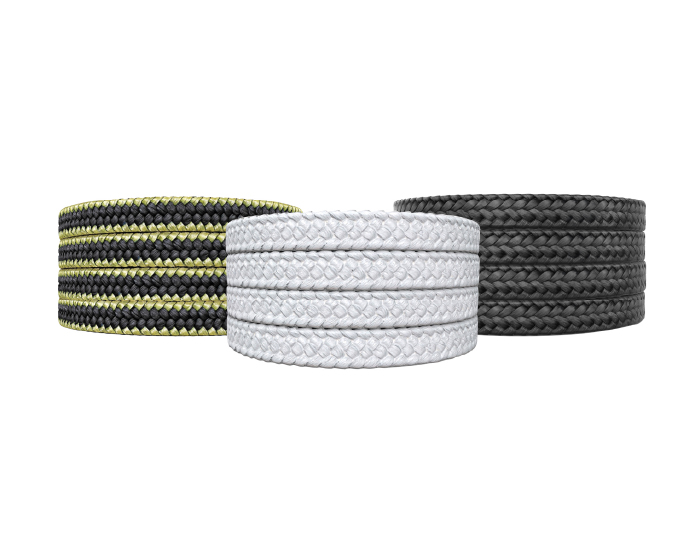Question: What is Braided Pump Packing?
Braided pump packing refers to a sealing method used in industrial pumps to contain the liquid being pumped. It involves wrapping a material, typically made of braided or twisted fibers, around the rotating element (typically a shaft) and compressing it between the shaft and the stationary housing (known as a stuffing box). The packing is held in place and compressed against the two surfaces by a metal plate (known as a gland follower) which is tightened with a series of fasteners. Once adequately tightened, the packing creates a barrier along the shaft allowing the leakage to be tightly controlled.
Pump Packing Materials:
Packing material is typically made from materials such as graphite, carbon, aramid, PTFE, or fiberglass, and can be impregnated with lubricants or other materials to improve its performance. Packing material is chosen based on the type of fluid being pumped, its temperature, and pressure, among other factors. While pump packing is a reliable sealing method, it does require regular maintenance to ensure its effectiveness. Over time, the packing material can wear down, lose its lubrication, and begin to leak at an increasing rate. As a result, periodic adjustments and replacements may be necessary to maintain the seal and prevent leakage.
Advantages and Disadvantages of Packing versus a Mechanical Seal:
Advantages:
• Can install without disassembly of the pump.
• Can add rings as required without disassembly.
• It is adjustable.
• Relatively low cost.
Disadvantages:
• Typically can not create a liquid tight seal.
• Leakage is required to reduce friction and heat.
• Material compatibility can be difficult with certain chemicals
• Cutting rings and installing can be challenging
• Water is often required to quench the packing
• Unwanted dilution of process media from flush
